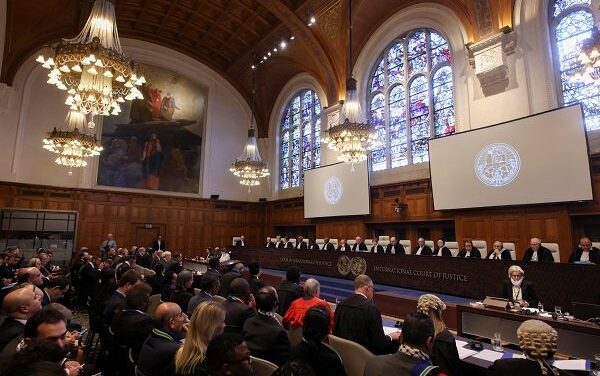One of the main legacies of the corona pandemic was the remarkable increase in the level of the debt of governments across the world. Only in the United States of America, with the debt level of 23,000 billion dollars in 2020, the debt level reached 27,000 billion rials in October. This level of debt is about 135 percent of the GDP of the United States and has caused an increase in the credit risk of the world’s largest economy.
What is the debt crisis?
The debt crisis is a condition in which a government fails to repay its debt. Countries enter the debt crisis when tax revenues are less than government expenditure for a relatively long period (1). In any country, tax is one of the main sources of paying government expenditure. When tax revenues are insufficient, the government can take a loan and distribute state treasury bonds and then finance its operations and activities.
When a government enjoys sufficient fame and less debt, it is the best candidate to receive facilities from the loan givers. Such a government will not face problems in repaying these debts. Notwithstanding, if a government has to repay a heavy debt, the risk of non-payment of debts and consequently the concern of investors grow and would request a higher rate for such bonds. Therefore, the cost of capital of such bonds would gradually increase and the repayment of debts would not imperceptibly be possible by the government.
The 2008 debt crisis
Many countries have experienced the debt crisis. The Latin American countries experienced debt crisis in the 1980s; Europeans faced debt crisis in the beginning of 2009. The debt crisis of the 2008 which began by the collapse of the Iceland banking system spread to other countries such as Portugal, Italy, Ireland, Greece and Spain. This crisis caused budget deficit of some European countries to reach 10 percent of their GDP. The peak of this crisis was between 2010 and 2012 when the crisis in Greece and non-transparency in the declaration of budget deficit in Greece resulted in the intensification of the debt crisis.
Figure 1: budget deficit and public debt of European countries in 2009
In the end, this crisis was controlled thanks to the efforts of the International Monetary Fund and the financial guarantee of European countries that were afraid of the collapse of Euro and the financial system of the EU. The political impact of this crisis was the extensive resignation of government officials in European countries and even the collapse of some powerful European parties in Ireland, Portugal, Spain, Slovenia, the Netherlands and Greece. Some of the economic impacts of the 2008 debt crisis included widespread unemployment in crisis-hit countries, collection of deposited assets of the people by the banks and homelessness of many people as well as the severe reduction of economic growth, reduction of the price of assets and many other catastrophes.
Figure 2. Budget deficit and debt of European countries in 2012
The debt crisis of the Euro region was created by structural problems caused by the globalization of finance, easy credit terms during 2002 and 2008, lack of balance in global trade, breaking the bubble of the property markets and other reasons which caused the great recession of 2008 and 2012 (2).
The crisis ahead
After these events, today in the global arenas, we are facing the same background of the big recession of 2008—where the global economy is shouldering the deep wound caused by the outbreak of the corona virus. The Covid-19 outbreak, according to the figures published by the International Labor Organization, caused 400 million people to lose their full-time job across the world and the G20 countries experience a more 3.4 percent negative economic growth. The Planning and Development Office of the United Nations has estimated that developing states have lost 220 billion dollars in revenues as the result of the coronavirus outbreak (3)(4).
Figure 3. Global debt as per private and public debts to the percentage of the GDP during 1970-2019
Even though debt can compensate itself when it is invested in the generating sections of investment, and the revenues made out of it can finance the principle and its interest, the debt of governments during the outbreak of coronavirus has been spent more on non-generating section. On the other hand, a strong economic growth can result in the reduction of debts because it can increase the GDP and reduce the ratio of debt to the GDP. However, unfortunately, the global economic growth has remained steady since 2008 and after the global financial crisis with lower interest rates, injection of liquidity and budget deficit and has been in fact in the artificial breathing status.
With a reduction in the revenues of companies and an increase in the danger of financial bankruptcy, the risk of non-payment would increase in the world. Also, companies would face more debts to survive in the business environment created by the outbreak of coronavirus and this per se would cause an increase in public debts and an increase in financial risk and ultimately the interest rate and also increase the cost of finance on the government and the private sector. Therefore, it can be mentioned that presently conditions are appropriate more than before for the return of the big recession of 2008.
Figure 4. Public debt and GDP of the United States of America (Source: US Federal Reserve)
An examination of the US economic data proves this right. According to the figures published by the usdebtclock.org, the national debt of the United States is presently close to 28 trillion dollars while its GDP is 21 trillion dollars and the ratio of debt to the GDP of the United States is about 1.3 which indicates a high credit risk. The interest rate in the US is annually 393 billion dollars which should be paid through the annual revenues of the US government and tax revenues are the main source of the US government income and are equal to 3.5 trillion dollars. In fact, each year, one tenth of the revenues of the US government are spent on paying interest and in the coming years, we would be witness to an increase in this ratio. Therefore, there will remain less income for expenditure in the non-financial sector of the United States. In order to understand the depth of the crisis, it is sufficient to know that the per capita income of the US government is 10,449 dollars and the per capita debt of this country is 222,191 dollars. Therefore, the per capita debt is approximately 22 times greater than the per capita income.
The outcome of the crisis ahead
If we believe on the theory of the repeat of history, future can be seen with a view to the mirror of the past. With a look at the past financial crisis, we can perceive the outcome of the crisis ahead. The investigation of the big crisis of 2008 demonstrates that breaking the bulb of the price which led to the collapse of the financial and credit systems and consequently a reduction in getting assets into cash in the United States ended in a big recession in that country. Global trade and investment also faced a decline and ultimately resulted in recession in all developed economies. However, what is significant here was the final control of this crisis through financial austerity policies and measures for a period of three to four years.
Now, the new research by the information unit of the Economist indicates that the high rate of debt created during the coronavirus crisis could cause a deeper crisis and another recession in some countries with the presentation of extensive financial incentives. According to this research, another debt crisis is likely to be evolved. In the meantime, governments are increasing spending on the combat with the Covid-19 pandemic in order to maintain their economic architecture and keep employees in labor. Therefore, budget deficit will severely increase in the coming years.
This debt crisis is re-occuring not only in the US but in its main trade partners such as Japan and the Britain and it could be mentioned that one of the main engines of global economy is being destroyed. And due to the strong links between the economies of the countries and large economies, an economic collapse is awaiting the world. However, we will at least be witness to a big global recession. In this way, the next debt crisis will be coupled with flagrant inflations and reduction in the foreign currency of the countries which will ultimately result in a reduction in the power purchase and debt. Moreover, it will decrease economic growth for a long time in many countries. For this reason, many countries such as China and Russia and some European countries are selling bonds of the US government and replacing it with gold and valuables. When this collapse happens, definitely countries with the least dependence on global financial and trade systems would experience minimum damage and maximum benefit.
Of course, this optimistic analysis would realize if in the aftermath of this crisis and lack of convergence, strengthening of national governments and nationalist policies, multilateral world and increase in global division, other black goose such as world war is not awaiting the world.
References:
Bondarenko, Peter (September 2015). “Debt crisis”. Encyclopædia Britannica. Retrieved 29 March 2019.
“
How Europe’s Governments have Enronized their debts
, Mark Brown and Alex Chambers, Euromoney, September 2005
“G20 GDP Growth – First quarter of 2020, OECD”
.
OECD
. 11 June 2020. Retrieved 6 September2020.
McKeever, Vicky (30 June 2020).
“The coronavirus is expected to have cost 400 million jobs in the second quarter, UN labor agency estimates”
. CNBC. Retrieved 6 September2020.










0 Comments